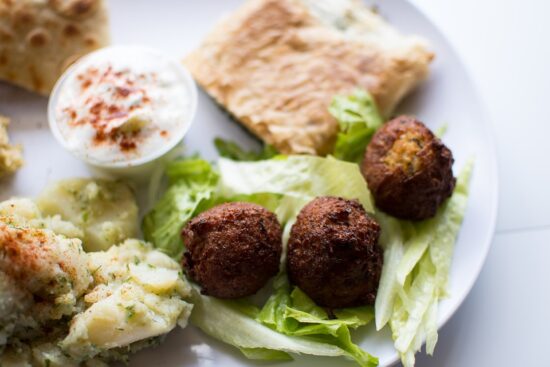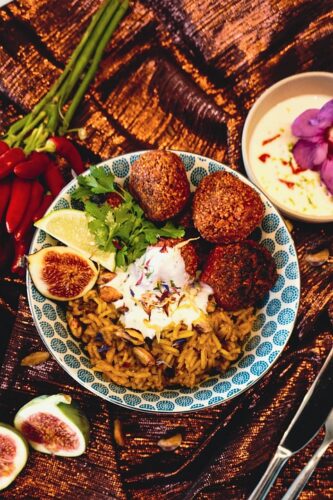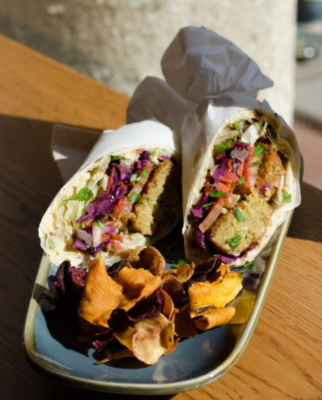Falafel
Falafel. Could you maybe put something else on the list that is not f!@$&* meat? Yes. Sorry. We’ve got one more for you and it’s actually as omnipresent as the kebab in Berlin. What? How is this even possible? Falafel my friends. Oh. Ok yes. It is pretty common. So both Arabs and Israelis regard chickpea balls as a national dish. Both versions are available in Berlin. Falafel are balls made from swollen chickpeas, dipped in simmering fat, and done. A meal for the takeaway – quick to prepare, cheap, and quite filling. When they turn out well, they taste slightly nutty and are crispy on the outside, and juicy on the inside.


If something goes wrong, they are burned on the outside and dry on the inside. For the immigrants of Arab origin they taste like home, for the Germans like the Orient. They are part of the cultural history of the Middle East: Arabs say it is their national dish, as do Israelis. The selection of side dishes with which one can fill the pita bread with the falafel is opulent: carrot, white cabbage, and couscous salad, radish marinated in beetroot juice, fried vegetables, peppers, olives, mixed pickles.
In addition, there is the famous sesame paste, called tahini, that can also be mixed with yogurt, which gives a slightly bitter taste. For the Israelis, mango sauce is also part of it. The German Institute for Nutritional Research considers the chickpea to be an “all-rounder”. It is low in fat and rich in fiber and protein and contains iron, magnesium, and vitamins. It is well suited for a vegetarian diet, has a “low potential for bloating” and makes you feel full quickly. The frying on the way to the falafel doesn’t hurt the balance because the cooking time is very short. “You should eat more falafel,” advises the institute’s staff member, and the snack is “healthy all around”.




